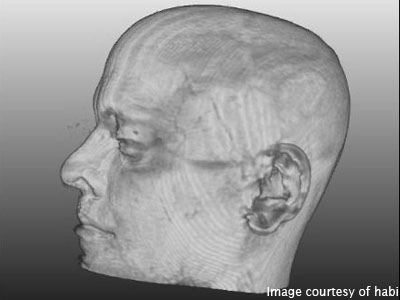Brain Research Imaging Centre Edinburgh
Posted on 10 September 2010
Brain Research Imaging Centre Edinburgh
Understanding the brain in sickness and in health

Understanding the structure and operation of the brain is vital in the diagnosis and treatment of severe brain conditions. Although ways of studying the brain have improved significantly, there is still much that we don’t understand about its function – not only when we are ill, but also when we are healthy.
Read the Brain Research Imaging Centre case study on the work completed by the Software Sustainability Institute.
Visit the Brain Research Imaging Centre website.
The Brain Research Imaging Centre - Edinburgh (BRIC-Edinburgh) is based at the Division of Clinical Neurosciences at the Western General Hospital, Edinburgh. BRIC-Edinburgh researchers use a wide variety of medical imaging techniques to better understand psychiatric disorders and diseases, such as multiple sclerosis, stroke and prion diseases (BSE/CJD). Many applications for medical image processing and analysis have been developed at BRIC-Edinburgh. The wider adoption of these applications could advance our knowledge of the brain and its function, so BRIC-Edinburgh are releasing the applications to the wider imaging community.
The Software Sustainability Institute is working with BRIC-Edinburgh to enhance two of their applications.
DICOM Confidential takes sensitive medical data and removes any information that allows patients to be identified. We assessed how easy it is to use, extend and modify DICOM Confidential, and undettook a review of its code. In collaboration with the BRIC-Edinburgh team, we considered the best ways to support DICOM Confidential, and the best route for ensuring long-term availability of the software. As a result of this activity DICOM Confidential is now hosted at SourceForge. Visit the project site.
MCMxxxVI (1936) (Multispectral Colour Modulation and Variance Identification) is a suite of image manipulation and analysis tools. It allows different medical images generated by MRI (Magnetic Resonance Imaging) scanners to be colourised and fused together. This process allows more medical information to be conveyed in a single image. The tools then allow tissues of interest to be viewed and extracted. The MCMxxxVI tools are currently used by students and are also of interest to clinicians. We are working with SBIRC to convert the MCMxxxVI tools into standalone applications, which will improve their usability and make them more accessible. We have ported one such tool, the Automatic Lesion Extractor, to C++ and a new SourceForge project, BRIC1936, created to host it. Visit the project site.
BRIC-Edinburgh have always been aware of the importance of sustaining software. We are working with them to enhance this awareness by providing training, and exploring options for improving the sustainability of the software they develop. Working with BRIC-Edinburgh allows the Software Sustainability Institute to apply and evaluate our sustainability expertise so that we can enhance the services that we provide.
BRIC-Edinburgh is a significant contributor to research into understanding brain diseases and is a member of SINAPSE (Scottish Imaging Network – A Platform for Scientific Excellence), an initiative to promote collaboration in brain imaging across Scotland.

